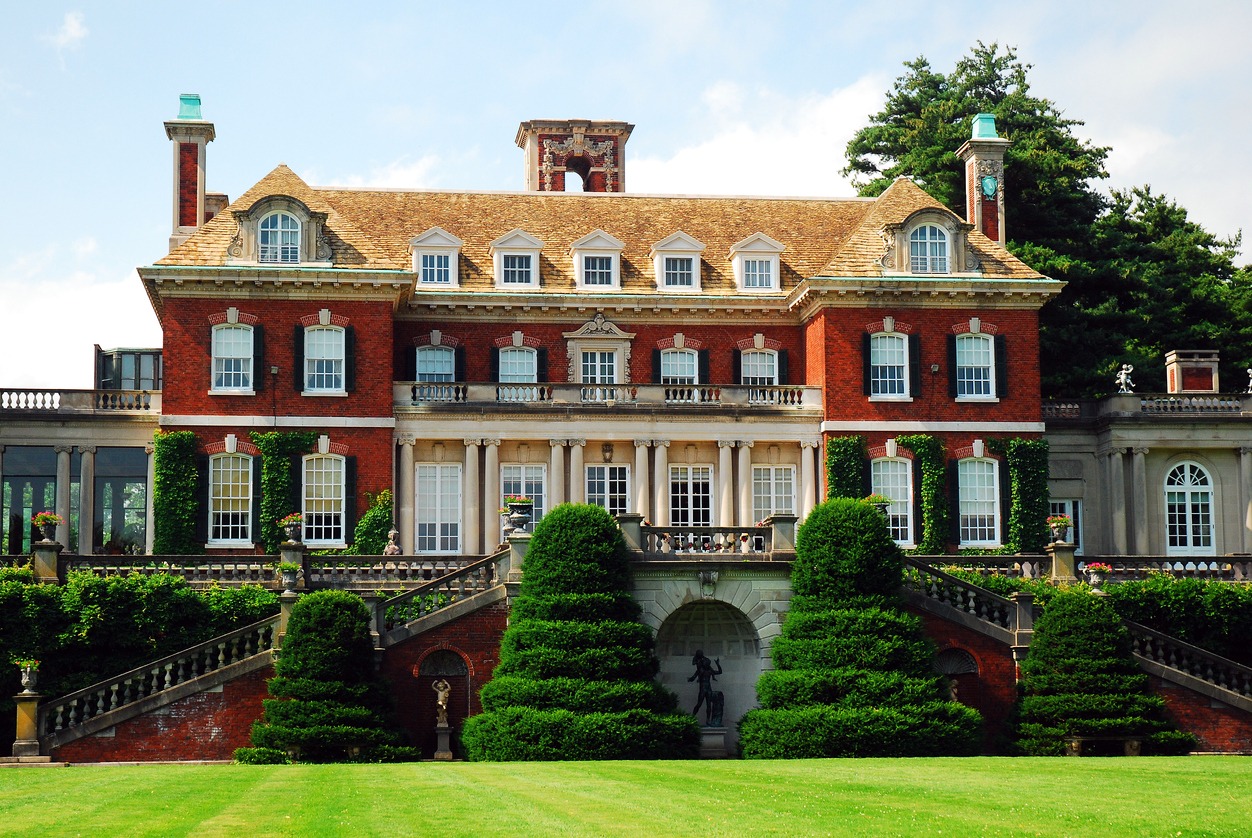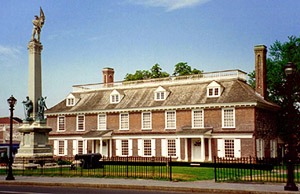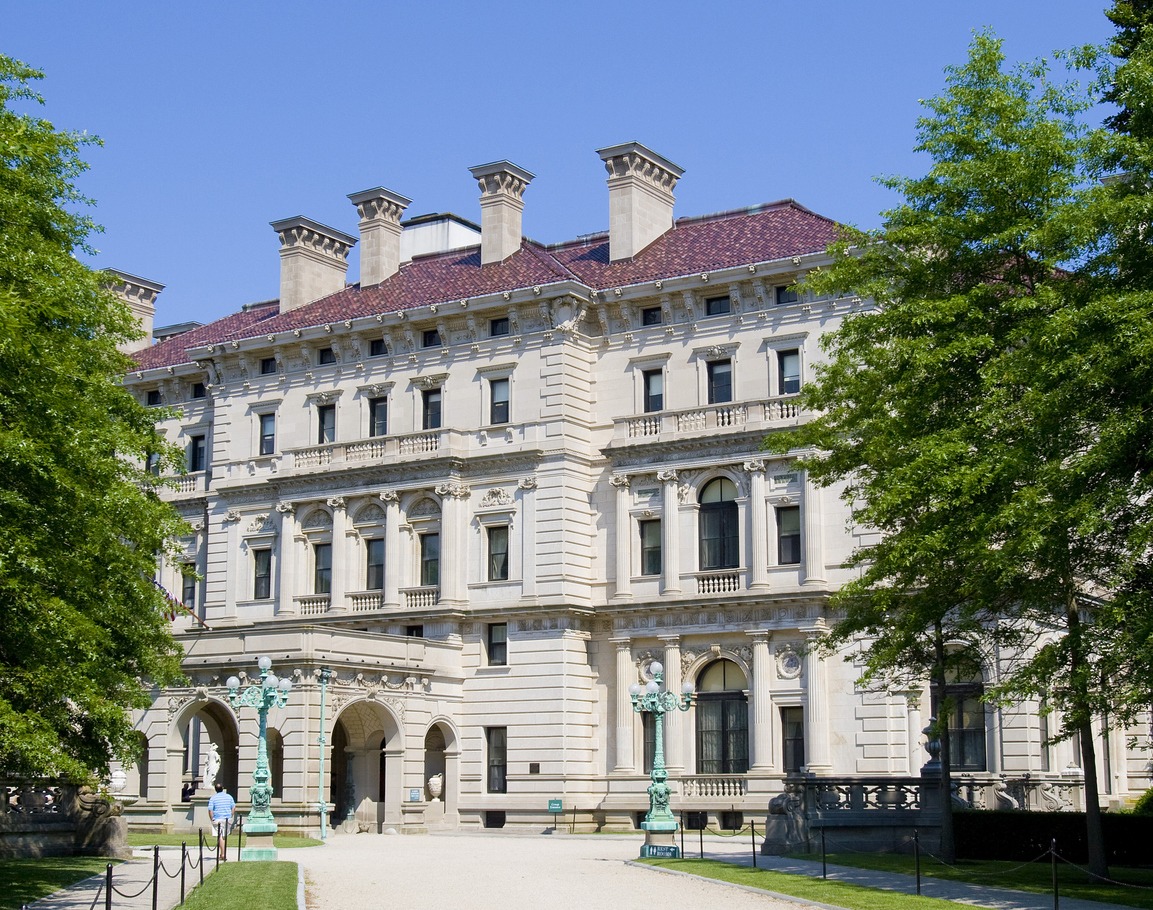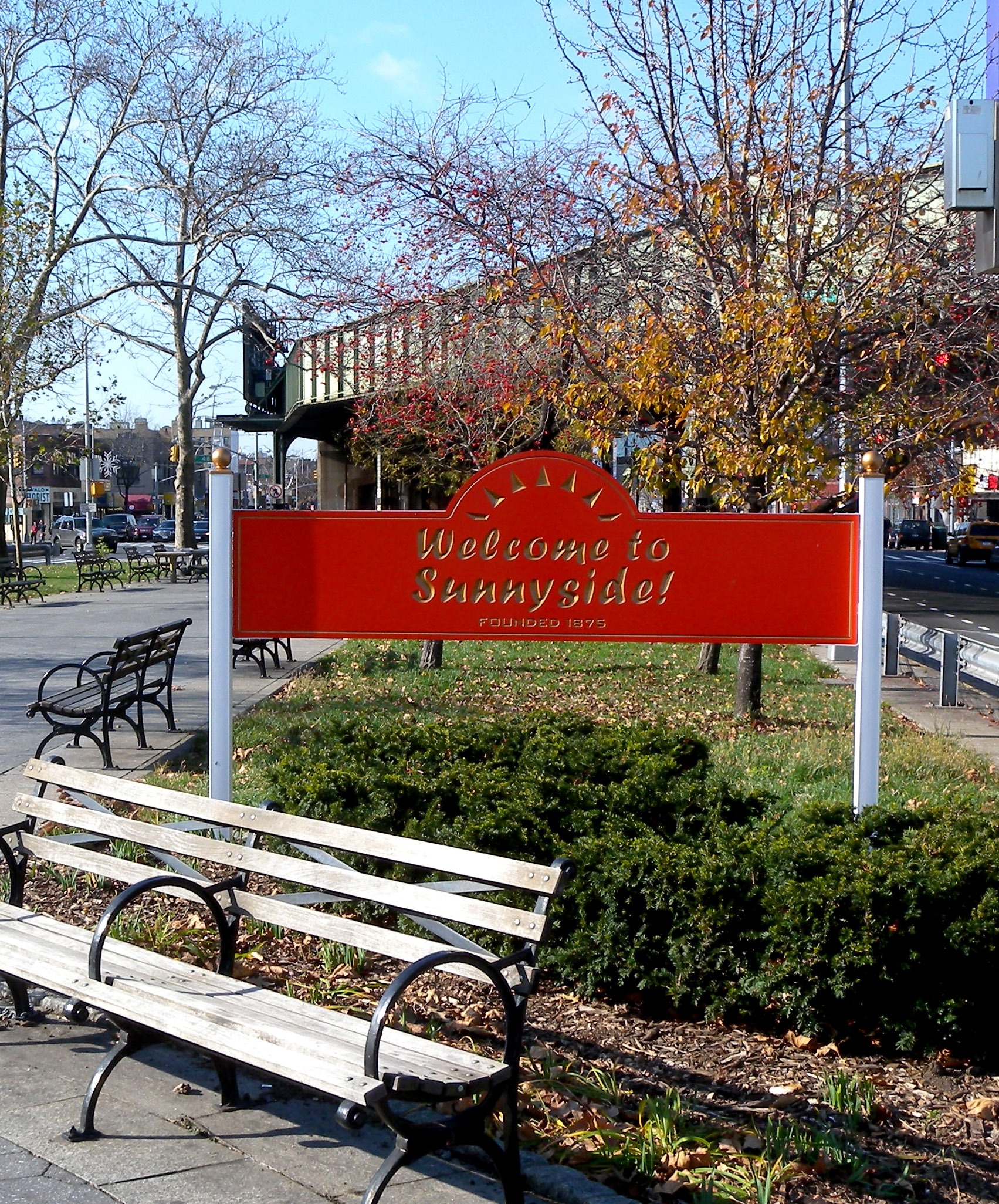New York City is a vibrant metropolis known for its iconic skyline, bustling streets, and rich tapestry of cultures. However, just beyond the city’s borders, the suburbs of New York hold their own treasure trove of historical sites and landmarks, each with a unique story to tell. From Revolutionary War sites to grand estates, the suburbs surrounding NYC offer a fascinating glimpse into America’s past. In this blog post, we’ll explore some of the most intriguing historical sites located in the NYC suburbs, perfect for history buffs and casual explorers alike.
Philipsburg Manor – A Gateway to Colonial America in Sleepy Hollow, New York
Philipsburg Manor in Sleepy Hollow, New York, stands as a remarkable testament to the complexities and intricacies of colonial American life in the 18th century. This meticulously preserved working farm and mill complex provides a fascinating window into the past, inviting visitors to step back in time to an era that shaped the foundation of America. Discover more NYC’s neighborhood. Visit Discovering the Hamptons – A Glimpse into America’s Quintessential Luxury Retreat
The Heart of Colonial Commerce
At the heart of Philipsburg Manor is its role as a pivotal center for the wheat trade, an industry that was crucial to the economy of the colonies. The manor’s gristmill, powered by the waters of the nearby Pocantico River, was an essential facility, converting wheat into flour, which was then shipped down the Hudson River to markets far and wide. Visitors to the manor can witness the gristmill in action, experiencing the sights, sounds, and smells of a fully operational colonial mill, a rare opportunity to understand the labor and technology of the time.
Daily Life in the 18th Century
The manor house itself is a treasure trove of historical artifacts and exhibits that depict the daily life of its inhabitants. Each room is carefully curated to reflect the lifestyles of the family who lived there, as well as the enslaved individuals who worked on the property. Through guided tours, visitors can explore the living quarters, kitchen, and workspaces, each telling a story of survival, resilience, and the social hierarchies of the colonial era.
The Enslaved People of Philipsburg Manor
A significant aspect of Philipsburg Manor is its honest portrayal of slavery in the northern colonies. The manor’s interpretation includes the narratives of the enslaved Africans who were integral to the operation of the farm and mill. Through interactive exhibits and educational programs, the site pays tribute to their contributions and acknowledges the harsh realities of their lives, providing a more comprehensive and nuanced understanding of American history.
Immersive Experiences and Educational Programs
Philipsburg Manor is not just a passive museum but a dynamic educational center. It hosts a variety of immersive experiences and events throughout the year, including reenactments, hands-on workshops, and seasonal festivities that celebrate the traditions and culture of the colonial period. These programs are designed to engage visitors of all ages, making history accessible and compelling.
The Gardens and Grounds
Surrounding the manor house and mill are the lush gardens and scenic landscapes that contribute to the serene beauty of Philipsburg Manor. The gardens are historically accurate reconstructions, featuring plants and herbs that were commonly grown in the 18th century for culinary and medicinal purposes. The expansive grounds, with their walking paths and tranquil settings, offer a peaceful retreat, inviting visitors to reflect on the past amidst the natural beauty of Sleepy Hollow.
Kykuit – The Rockefeller Estate in Tarrytown, New York
Kykuit, nestled in the picturesque town of Tarrytown, New York, is a beacon of the American Gilded Age’s grandeur and opulence. This majestic estate, once home to four generations of the Rockefeller family, stands as a symbol of their immense influence and legacy in American history. A visit to Kykuit is not merely a tour of a historic home but an immersive journey into the lives of one of the nation’s most storied families, set against the backdrop of a pivotal era in American development. Explore more of NYC’s suburbs, car-free. Visit Thriving Car-Free – Navigating Life in NYC Without Wheels
Architectural Marvel and Artistic Sanctuary
The main house at Kykuit, a Classical Revival masterpiece, is a testament to the architectural innovation and aesthetic sensibilities of the early 20th century. Designed by the renowned architects Chester Holmes Aldrich and William Adams Delano, the house combines classical elements with modern comforts, creating a luxurious yet homely atmosphere. The interiors are adorned with exquisite furnishings, tapestries, and an array of art ranging from classical sculptures to works by modern masters like Picasso and Warhol, reflecting the Rockefellers’ deep appreciation for and patronage of the arts.
Explore more of New York City’s landmarks, as you discover Romantic Hotels in the area. Visit Top Romantic Getaways – Discovering New York City’s Most Enchanting Hotels.
The Gardens and Landscapes
The gardens of Kykuit, designed by the famous landscape architect William Welles Bosworth, are among the estate’s most breathtaking features. Meticulously planned and executed, these gardens blend formal terraces, fountains, and intricate landscaping with the natural beauty of the Hudson Valley. The estate’s expansive grounds also feature numerous sculptures, including works by renowned artists such as Henry Moore and Alexander Calder, set in a harmonious dialogue with the surrounding landscape.
A Legacy Preserved
Kykuit is more than just a showcase of wealth and artistic taste; it is a living legacy of the Rockefeller family’s contributions to American society. The estate serves as a physical embodiment of the family’s commitment to philanthropy, conservation, and cultural patronage. Tours of Kykuit offer insights into the Rockefellers’ public and private lives, their values, and their enduring impact on the cultural and economic fabric of the nation.
Educational Tours and Cultural Programs
Visiting Kykuit provides an educational experience that goes beyond the visual splendor of the estate. Guided tours delve into the history of the Rockefeller family, their philanthropic endeavors, and their role in shaping the American landscape. Specialized tours may focus on the estate’s art collections, gardens, or architecture, providing a deeper understanding of the various facets of this remarkable property.
Old Westbury Gardens – A Portal to the Opulence of Early 20th Century Elite in Old Westbury, New York
Old Westbury Gardens, located in the serene town of Old Westbury, New York, stands as a resplendent symbol of the early 20th century’s elite lifestyle. Once the residence of the affluent Phipps family, this estate encapsulates the pinnacle of luxury and architectural beauty of its time. A visit to Old Westbury Gardens is not just a walk through a lush estate but a journey into the lavish world of American aristocracy during an era of unparalleled splendor.
Architectural Grandeur
The centerpiece of Old Westbury Gardens is the majestic mansion, an exquisite example of Charles II-style architecture. Designed by the renowned English architect George A. Crawley, the mansion exudes an air of regal elegance, with its grand façade, sweeping gables, and ornate detailing. The interior of the house is equally impressive, featuring intricate plasterwork, handcrafted wood paneling, and a collection of fine furnishings that evoke the sophisticated tastes of the Phipps family.
Artistic and Cultural Treasures
Within its walls, the mansion houses an array of artistic treasures, including paintings, sculptures, and decorative arts. These pieces not only embellish the interiors but also serve as a testament to the family’s patronage of the arts and their cultural sophistication. Each room tells a story, from the grand ballroom, with its opulent chandeliers and sumptuous décor, to the more intimate family spaces, which offer a glimpse into the personal lives of the estate’s former inhabitants.
Enchanting English Gardens
The gardens of Old Westbury are a marvel in their own right. Inspired by traditional English gardens, they encompass over 200 acres of formal gardens, landscaped grounds, serene ponds, and picturesque woodlands. The meticulous design of the gardens, with their vibrant flower beds, classical statuary, and tranquil water features, creates a harmonious blend of natural beauty and artistic landscaping. The West Pond, with its idyllic setting and reflecting waters, is a highlight, offering stunning views of the mansion and surrounding foliage.
A Venue for Cultural Engagement
Today, Old Westbury Gardens serves not only as a historical site but also as a vibrant cultural venue. It hosts an array of events throughout the year, including concerts, lectures, and educational programs, which celebrate the estate’s rich history and the arts. Seasonal events, such as garden tours, flower shows, and holiday celebrations, attract visitors from near and far, making the estate a lively center for community and cultural engagement.
Fort Ticonderoga – A Bastion of American History in Ticonderoga, New York
Fort Ticonderoga, perched on the scenic shores of Lake Champlain in Ticonderoga, New York, is a monument to the resilience and strategic significance of early American defense. Known as “the key to the continent” in the 18th century due to its strategic location, this historic fortification witnessed pivotal moments during the Revolutionary War, making it a cornerstone of American heritage.
Strategic Military Outpost
Constructed by the French in 1755 during the French and Indian War, Fort Ticonderoga was originally named Fort Carillon and was designed to control the narrow water passage connecting Lake Champlain and Lake George. Its strategic importance became even more pronounced during the Revolutionary War when it became the site of the first American victory in 1775. This early triumph provided a much-needed cache of artillery for the Continental Army, which was later used in the Siege of Boston.
Living History Museum
Today, Fort Ticonderoga has been transformed into a living history museum, offering visitors a comprehensive look into 18th-century military life, tactics, and the fort’s crucial role in America’s fight for independence. The fort’s well-preserved structures, including barracks, ramparts, and artillery positions, offer a tangible connection to the past, allowing visitors to walk in the footsteps of soldiers who once manned its defenses.
Reenactments and Educational Programs
One of the highlights of a visit to Fort Ticonderoga is the immersive experience provided by reenactments and interactive demonstrations. Costumed interpreters bring the fort’s history to life, engaging in musket drills, artillery demonstrations, and daily activities that depict the routines of soldiers stationed at the fort. These reenactments, combined with detailed exhibitions, provide an engaging and educational experience that paints a vivid picture of the complexities of military life during the 18th century.
The King’s Garden and Surrounding Landscapes
Beyond its military significance, Fort Ticonderoga is also home to the King’s Garden, a beautifully restored 18th-century garden that offers a peaceful contrast to the fort’s martial history. The surrounding landscape, with its breathtaking views of Lake Champlain and the Adirondack and Green Mountains, underscores the natural beauty that made this location so strategically valuable.
A Venue for Learning and Exploration
Fort Ticonderoga also serves as an educational center, offering a range of programs, workshops, and seminars aimed at deepening the understanding of America’s early history. For scholars, history enthusiasts, and families, the fort provides a dynamic learning environment that explores themes of leadership, strategy, and the complexities of colonial and revolutionary America.
Vanderbilt Mansion National Historic Site
The Vanderbilt Mansion National Historic Site, nestled in the picturesque town of Hyde Park, New York, stands as a grand testament to the opulence and sophistication of the American Gilded Age. This Beaux-Arts mansion, once the seasonal residence of Frederick William Vanderbilt, a member of the illustrious Vanderbilt family, reflects the unparalleled wealth and luxury enjoyed by America’s industrial magnates at the turn of the 20th century.
Architectural Elegance and Design
Designed by the renowned architectural firm McKim, Mead & White, the Vanderbilt Mansion epitomizes the Beaux-Arts style, which favored classical forms and elaborate detailing. The mansion’s facade, with its balanced proportions and elegant symmetry, exudes a sense of grandeur and formality characteristic of the period. The estate’s layout and architectural elements, from the ornate limestone exteriors to the meticulously crafted interiors, were intended to reflect the social status and refined tastes of its occupants.
Lavish Interiors and Artistic Details
The interior of the Vanderbilt Mansion is a showcase of luxury and craftsmanship. Each room is a work of art, featuring exquisite woodwork, imported marble, gilded moldings, and sumptuous furnishings. The mansion boasts an impressive array of rooms, including a grand entrance hall, a formal dining room, opulent reception rooms, and private family quarters, each designed with a unique aesthetic theme and adorned with European antiques, tapestries, and artworks. The attention to detail and the quality of materials used throughout the mansion underscore the wealth and sophistication of the Vanderbilt family.
Landscaped Grounds and Scenic Beauty
Surrounding the mansion are the equally impressive landscaped grounds, designed to complement the architectural elegance of the estate. The formal gardens, terraces, and walking paths are laid out in a manner that maximizes the scenic vistas of the Hudson River and the Catskill Mountains beyond. The natural beauty of the site, combined with the carefully designed landscape features, creates a tranquil and picturesque setting that enhances the grandeur of the mansion.
A Window into the Gilded Age
Visiting the Vanderbilt Mansion offers a glimpse into the lifestyle of America’s elite during the Gilded Age, a time when industrial fortunes transformed the social and cultural landscape of the nation. The mansion serves not only as a monument to the Vanderbilt family’s wealth but also as a cultural artifact that provides insight into the values, aspirations, and aesthetics of the era.
Educational Programs and Tours
The Vanderbilt Mansion National Historic Site is more than just a historic home; it is an educational resource that offers guided tours, exhibits, and programs designed to engage visitors with the history and significance of the Gilded Age. Through these offerings, visitors can gain a deeper understanding of the economic, social, and cultural forces that shaped this opulent period in American history.
Sunnyside – The Enchanting Retreat of Washington Irving in Tarrytown, NY
Sunnyside, nestled along the tranquil banks of the Hudson River in Tarrytown, New York, stands as a cherished monument to Washington Irving, one of America’s foremost literary figures. Known for penning iconic tales like “The Legend of Sleepy Hollow” and “Rip Van Winkle,” Irving created a home that was as whimsical and inviting as the stories he wrote. Today, Sunnyside invites visitors to step into the world of a writer whose works have captivated readers for generations, offering a deeply personal insight into his life, inspirations, and the era he lived in.
A Home Reflecting Literary Genius
The architecture of Sunnyside is a direct reflection of Irving’s imaginative spirit and his love for blending the historical with the romantic. The house, with its Dutch colonial revival elements, gothic windows, and Spanish roof tiles, presents an eclectic mix that Irving himself described as “a little nookery somewhat in the Dutch style, quaint and retired.” The residence is surrounded by a landscape carefully designed by Irving, featuring winding paths, walled gardens, and shaded groves that seem to leap straight out of a storybook.
Intimate Glimpses into Irving’s World
The interior of Sunnyside offers an intimate glimpse into Irving’s personal and professional life. Each room is meticulously preserved, from Irving’s study, where he penned many of his famous works, to the parlor and bedrooms, each infused with the warmth and character of its owner. The house is filled with Irving’s personal belongings, including his writing desk, books, and artworks, allowing visitors to connect with the author in a profoundly personal way.
The Grounds: A Source of Inspiration
The grounds of Sunnyside are as much a part of Irving’s legacy as the house itself. With sweeping views of the Hudson River and the Tappan Zee, the estate’s gardens and natural surroundings provided a constant source of inspiration for Irving. Visitors can explore the same landscapes that inspired the eerie settings of “The Legend of Sleepy Hollow,” immersing themselves in the natural beauty that sparked the imagination of one of America’s literary pioneers.
Sunnyside’s Cultural and Historical Significance
Beyond its architectural and literary significance, Sunnyside serves as a cultural time capsule of the 19th century, offering insights into the historical context in which Irving wrote. The estate encapsulates the romanticism of the period, with its emphasis on nature, emotion, and the sublime, reflecting the broader cultural currents of the time.
Engaging with Irving’s Legacy
Sunnyside is not just a museum but a vibrant cultural center dedicated to preserving and interpreting Irving’s life and works. Through guided tours, educational programs, and special events, visitors can engage with Irving’s stories and their historical context in meaningful ways. Seasonal events, literary readings, and thematic tours enhance the visitor experience, making Sunnyside a dynamic destination for literature enthusiasts, families, and anyone interested in the rich tapestry of American history and culture.
Lyndhurst Mansion – A Gothic Revival Masterpiece in Tarrytown, NY
Lyndhurst Mansion, situated in the historic town of Tarrytown, New York, is one of the nation’s finest examples of Gothic Revival architecture. This architectural treasure, once the residence of the 19th-century railroad magnate Jay Gould, stands as a testament to the era’s extravagance and the rich cultural heritage of the Hudson Valley. With its towering spires, intricate carvings, and expansive grounds, Lyndhurst Mansion offers visitors a glimpse into the opulent lifestyles of America’s Gilded Age elite.
Architectural Splendor and Design
Designed by the renowned architect Alexander Jackson Davis in 1838 and expanded upon over the years, Lyndhurst’s design is characterized by its dramatic façade, pointed arches, and ornate decorative elements. The mansion’s silhouette against the backdrop of the Hudson River creates a striking image, embodying the romantic spirit of the Gothic Revival movement. The estate’s layout, with its asymmetrical arrangement and picturesque landscaping, was meticulously planned to enhance the natural beauty of the surrounding area and create a harmonious blend of architecture and nature.
Inside the Mansion – A Journey Through Time
The interiors of Lyndhurst Mansion are as impressive as its exterior, with rooms that are richly adorned with original furnishings, artworks, and ornamental details. Each room within the mansion tells a part of the estate’s story, from the elegant Grand Picture Gallery to the sumptuous dining room and the intimate library. The careful preservation of these spaces allows visitors to step back in time and experience the luxury and sophistication of the late 19th century.
A Landscape of Beauty and Leisure
The 67-acre park surrounding Lyndhurst Mansion is a masterpiece of landscape design, offering breathtaking views and serene walking paths. The grounds feature a variety of gardens, including a rose garden, rock garden, and fern garden, each designed to provide year-round beauty. The estate’s parkland, with its rolling lawns and ancient trees, invites visitors to explore the tranquil beauty of the Hudson Valley and enjoy leisurely strolls along the river’s edge.
A Center for Arts and Culture
Lyndhurst Mansion is not only a historic estate but also a vibrant cultural center. The mansion hosts a range of events throughout the year, including art exhibitions, antique shows, and seasonal festivities. These events, set against the backdrop of the mansion’s stunning architecture and grounds, offer a unique experience that blends history, art, and entertainment.
Tours and Educational Opportunities
Lyndhurst offers a variety of guided tours that delve into the mansion’s history, architecture, and the lives of its illustrious former residents. Specialized tours may focus on the mansion’s art collection, its role in the Gothic Revival movement, or the fascinating stories of the people who lived and worked on the estate. Educational programs and workshops provide further opportunities for visitors to engage with the mansion’s rich history and cultural significance.
Conclusion
The suburbs of New York City are dotted with historical sites that offer a window into various epochs of American history. From colonial homesteads and revolutionary forts to the grandiose estates of the industrial barons, these sites provide a diverse and enriching historical experience. Whether you’re a dedicated history enthusiast or simply looking for a day trip with a difference, the historic landmarks of the NYC suburbs are sure to captivate and educate. So, the next time you find yourself yearning for a historical adventure, consider stepping outside the city limits and exploring the rich heritage that lies just beyond.




